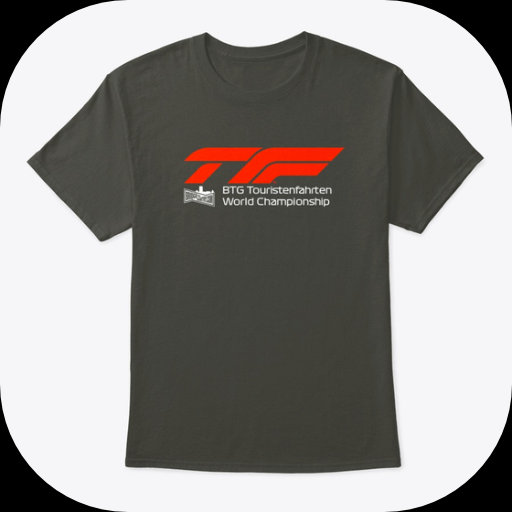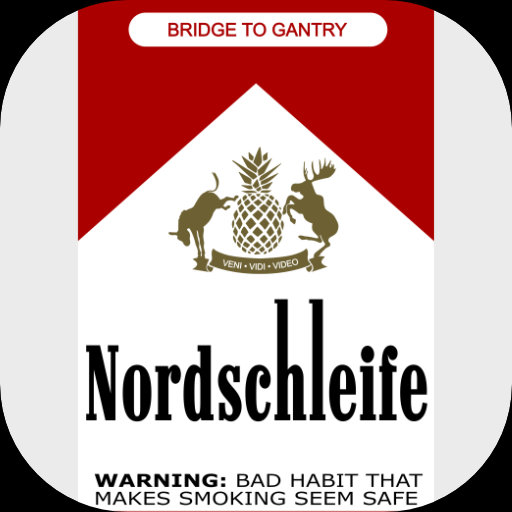The photo you can see here is Quite A Big Deal for many reasons. It’s a snapshot of the Fujitsu machine-learning that’s already in progress, released earlier today by the Nürburgring. The Nordschleife is a tricky beast, and it’s claimed the lives of many good people over the years. Crashing and hurting yourself is one thing, but many people have died on the ‘Ring in the moments after a crash, because the challenges of recognising dangers and slowing the traffic are tricky in blind locations with poor communications.
That’s why a new data cable was laid as a test-bed alongside the Döttinger Höhe this year, and Fujitsu have installed 8 high-definition cameras and a small server farm. If the system they’re testing works out OK, they’ll be looking at installing another 100 or so cameras all around the old North Loop. Sounds good to me.


As you can see, the cameras are already identifying cars and motorcycles with a fair degree of accuracy, and the software is clearly working with designated areas (track, grass, fence, etc…). It’s fair to assume that with close to 170 ‘corners’, this AI system will be far quicker at identifying potential problems and bringing them directly to the attention of the marshalls.
I mean, you could have a team of 200 to 600 marshalls, for every session, but do you prefer paying €30 per lap, or €3000 for a day?
But what’s less clear is how the Nürburgring want to try and educate the thousands of people who arrive for that €30 lap. Currently they don’t have to read a single line about yellow lights or overtaking rules before they hit the track. Sure, there are posters in the ticket office, and even hints on the ticket gates as people enter the track. But until the customer’s ticket purchase or greenhell driving account is linked to a tick-box forcing them to acknowledge that these rules exist, we’ll still see a disproportionate number of stupid incidents in TF each and every day.
And just because the ‘biggest’ channels don’t show crashes or dumb moves anymore, it doesn’t mean they aren’t happening.
Now, I’m not saying that we can fix stupid. Even ‘professional’ race series with actual examinations and license structures see qualified racers doing dumb things every weekend. On our BTG/CircuitDays trackdays we’ve had our own special customers doing silly things just minutes after leaving the briefing.
But more can still be done to help the average tourist driving the average touristenfahrten session. A consistent, publicised policy regarding the posted speed limits at Döttinger Höhe, T13 and Breidscheid would be nice. In the Jaguar taxi I was given a written command to slow down for them, while the public (and even other taxis) were barely aware of the signs. Just by watching onboard clips of Briedscheid, you can see the difference between a YouTuber who is ‘monitored’ by the Nürburgring (myself, and Misha, for example) and others who aren’t (Thilo, etc..)
Every time I enter a yellow zone in TF, I just *hope* that the people behind me know that a yellow light means no overtaking. About 8 times out of 10, they do. The other two times out of ten? Well, again I can’t show these moments, but they do exist. Education can reduce accidents, as our daily briefings at Rent4Ring have clearly shown over the last 13 years. And preventions, in my opinions, are far superior to remedies.
You can read the full press release below:
Nürburg. In the future artificial intelligence is set to revolutionize safety on the Nürburgring race track. The Nürburgring and the technology group Fujitsu have joined forces for this project. The focus is on the interaction between state-of-the-art software and sophisticated safety technology. In the future, dangers are to be recognized automatically and passed on to safety team and drivers at lightning speed. Development of the special software is in full swing on the Döttinger Höhe test section.
A vehicle goes off the track – not an uncommon incident on a racetrack. Not on the Nordschleife either. After all, it is considered to be the most demanding racetrack in the world. If there is an incident, the information has so far been sent via radio messages to the RaceControl – the heart of the racetrack. All relevant information about what is happening comes together here. This is where you decide what to do. Although these processes have been learned over decades, the situations on the Nordschleife can be difficult to assess. What is missing is a direct view of what is happening.
Software takes on a superhuman task
This “blind” situation could change through an extensive digitization measure on the Nordschleife. A first step is a test section that has been active in the “Döttinger Höhe” area since the 24-hour race. Eight cameras cover the 2.4 kilometre long area and provide the safety team with a comprehensive overview. For complete surveillance of the entire Nordschleife, which is characterized by a 20.8 kilometre track length with many curves and unclear track sections, one would need up to 100 cameras – in addition to the cameras already installed around the Grand Prix track. Keeping an overview of all camera signals would be an almost superhuman task. That is why the Nürburgring is working with Fujitsu on a solution with artificial intelligence.Artificial intelligence training
In the first step, the AI completes extensive training for the practical use of the new software. In doing so, it learns to classify various components of the racetrack, such as “lane”, “meadow”, “gravel”, “crash barriers” and the vehicles accordingly. The AI constantly analyses the segment on which a vehicle is currently moving. It also includes differentiating between various natural deviations such as rain or shadows. In addition, special features such as traces of oil, dirt on the road and other objects or living beings on the road are registered. The data collected in real time is immediately transferred to a system that can trigger further steps and alarms. These include automatic warnings for following traffic on LED panels or the prioritized display of the camera image for safety team. This training, further tests and the development of the AI are currently being driven forward on the first test section “Döttinger Höhe”. An application to the entire Nordschleife would bring the safety standard on the legendary racetrack into a new era. To make this happen, the Nürburgring and Fujitsu work hand in hand with their respective core competencies. In racetrack jargon, you could say: Both give full throttle for more safety.Statements:
Mirco Markfort, managing director of Nürburgring 1927 GmbH & Co. KG
“We have been investing large sums in the further development of security for years. Today, the Nordschleife is safer than ever. Through our involvement with Fujitsu, we are not only advancing security, we are also making a quantum leap. On the Nordschleife, which has existed for almost 100 years, we are using digital technology for the first time that revolutionizes safety and the associated mechanisms. “Jörn Nitschmann, Head of Manufacturing and Automotive Central Europe at Fujitsu
“As one of the largest and best-known locations in Germany, the Nürburgring is a predestined partner for technology-based solutions in the event and sports sector. The racetrack itself is unique and has a worldwide reputation for being the touchstone for the automotive industry. The saying, “Everyone praises what has been tested on the Nürburgring” is no coincidence. That is why we are pleased to be able to advance this ground-breaking project with new technologies as a digitization partner. “




